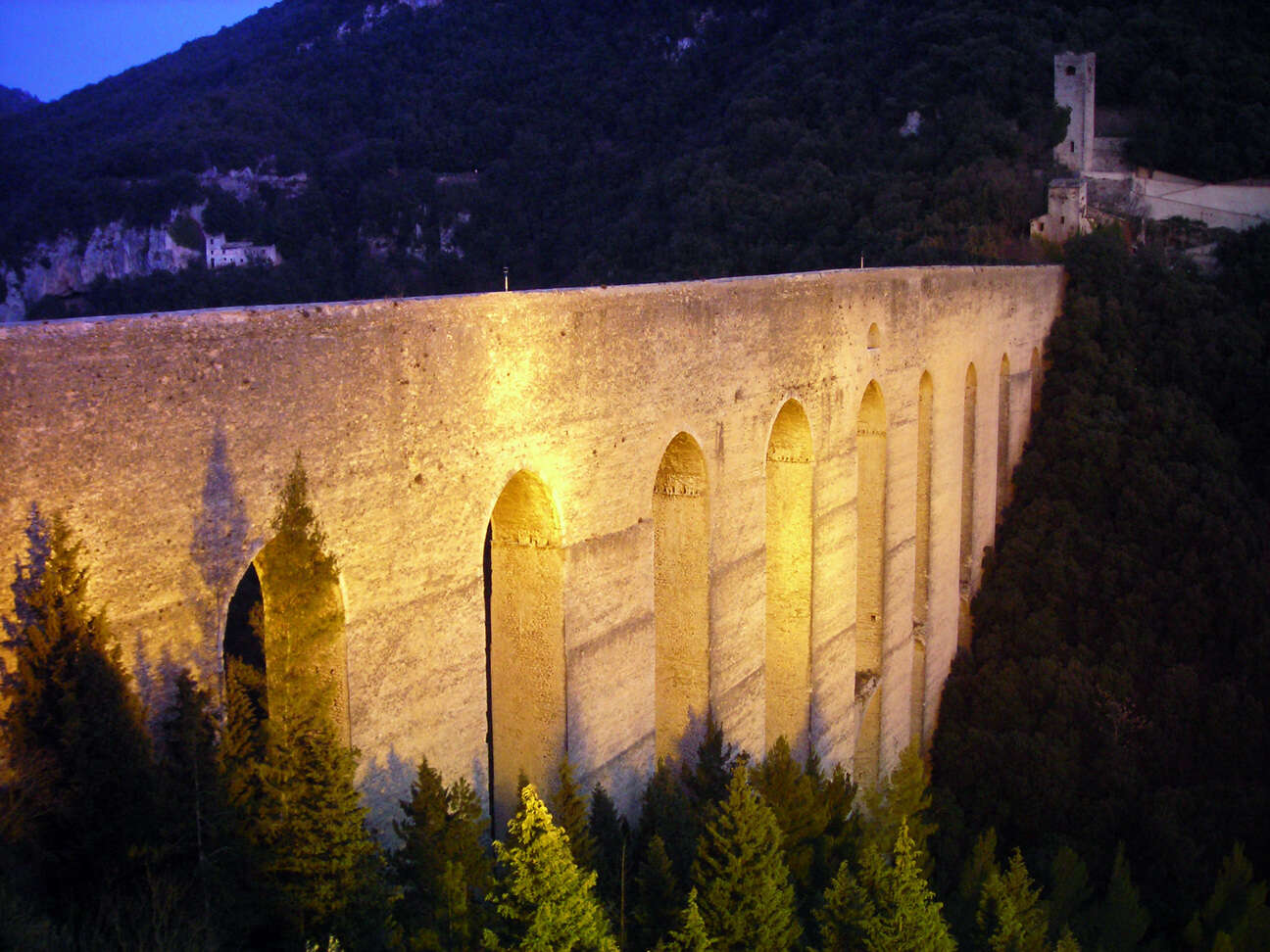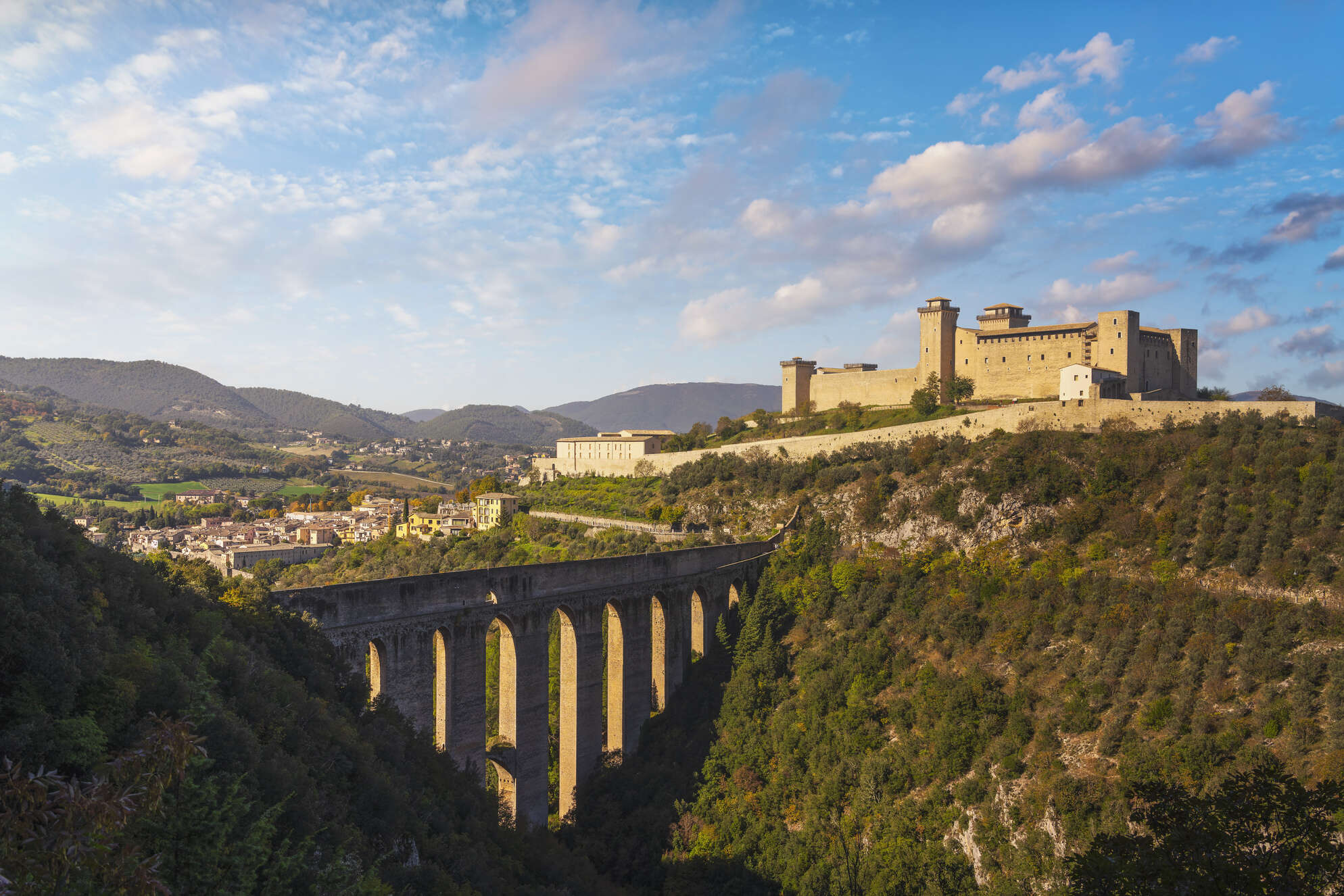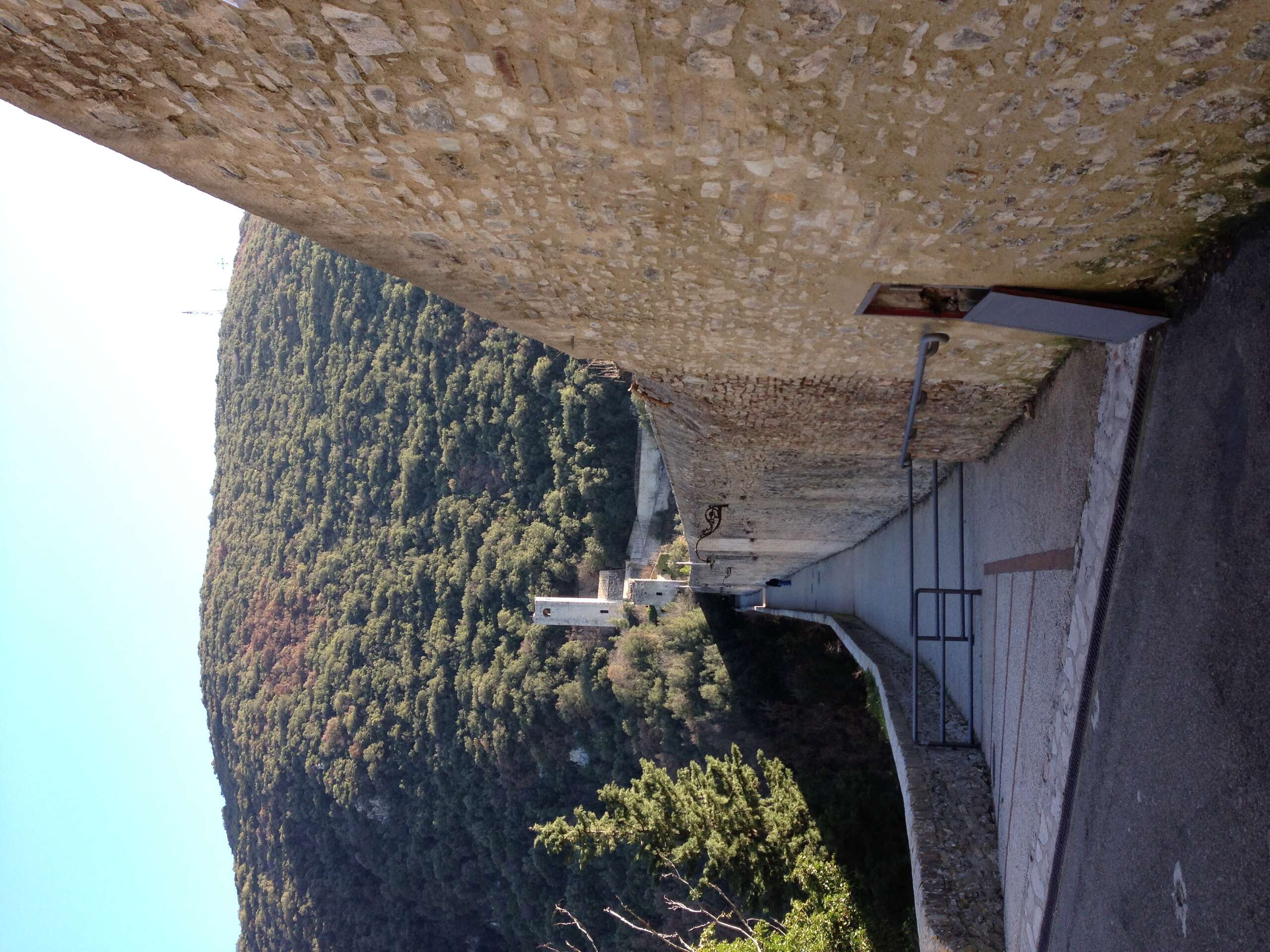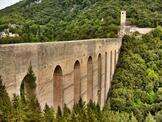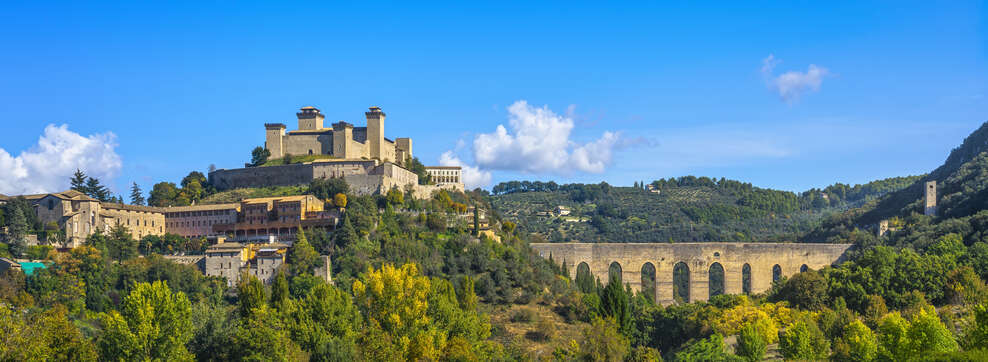Ponte delle Torri
Ponte delle Torri is a bridge in Spoleto, Umbria, central Italy. It spans the valley between Monte Torrone and Monte Petrano to join the old city center to the Piazza della Libertà (Freedom Square). It has a span of 67 meters (220 ft) and is one of the highest bridges in Italy.
Fortified defensive superiority
The medieval segmental arch bridge was built in the second half of the 14th century by Cardinal Albornoz as part of the restoration of the Via Flaminia. It was intended to replace an earlier structure destroyed by the citizens of Spoleto during their revolt against papal authority in 1176. The bridge was meant to be part of a fortified system that included towers along the walls, both for military purposes and for protecting the city from enemies. It served as an essential communication link between Rome and Northern Europe until the 19th century.
Three arches structure
Its design is unique with its three arches, each of which has a different span. The central arch has a span of 23 meters while the two flanking arches have spans of 12 meters. Together they form an overall length of the bridge at just under 50 meters.
Its construction was intended to demonstrate the superiority of the Church over the secular power of the Holy Roman Emperor. It has been said that this superstructure is one of the most interesting engineering works carried out between Roman times and the Renaissance.
The symbol of Spoleto
In addition to being a masterpiece of medieval engineering, Ponte delle Torri has become a symbol of Spoleto and now is a part of its coat of arms. The bridge has always been important for its artistic value. It was indeed one of the first sights to be visited by tourists during their stay in Bologna, thanks to its panoramic terrace, which offers a unique view over the historical center.
Today Ponte delle Torri is an integral part of the historical park Parco dei Sette Colli di San Luca (Seven Hills Park) which overlooks Bologna from above and hosts numerous events throughout the year. It is currently closed to traffic but can be crossed on foot or on a bicycle.
